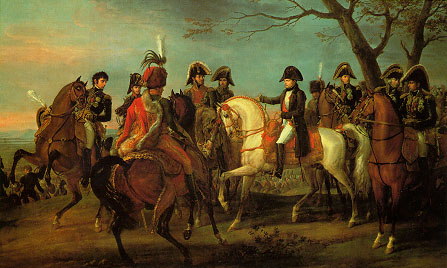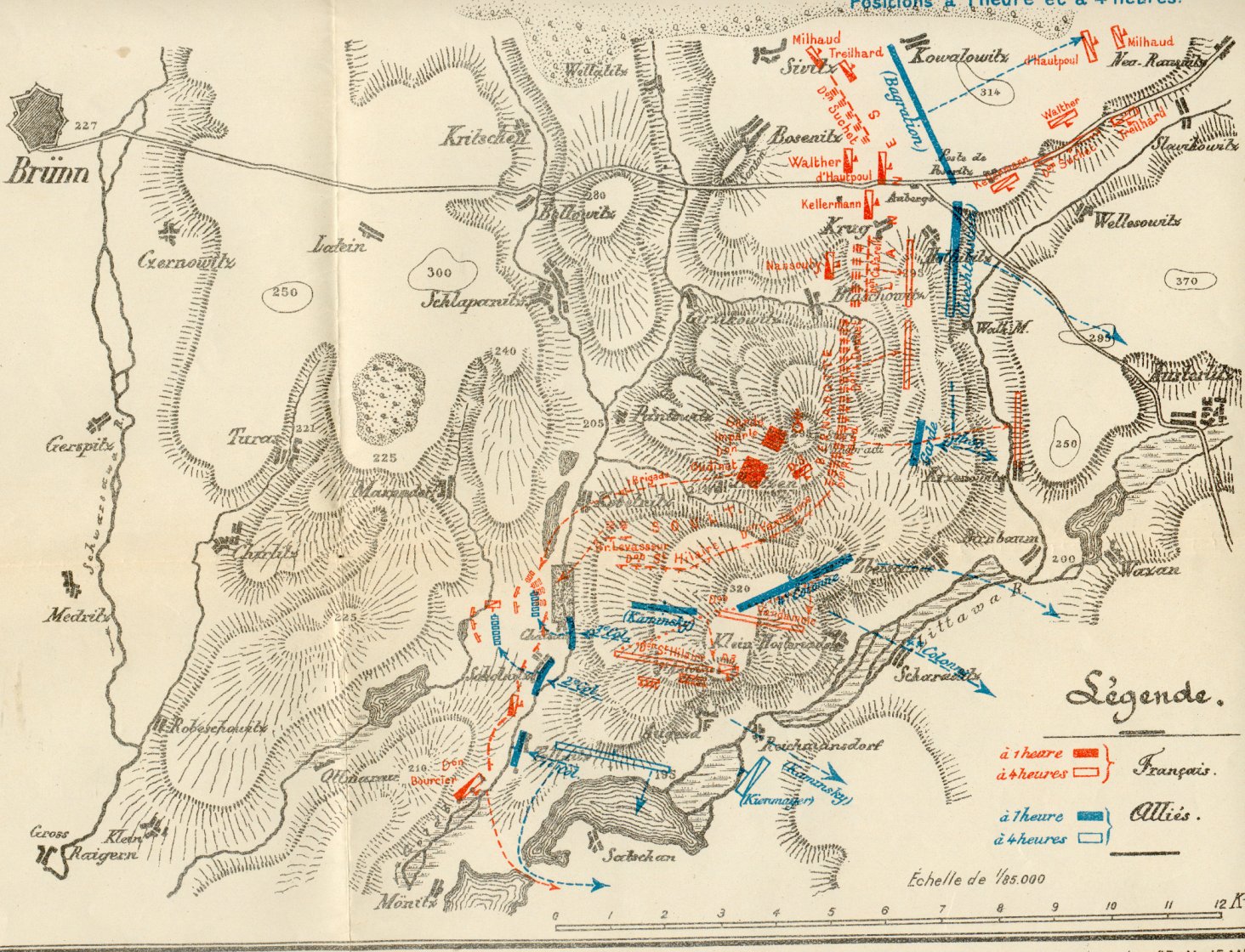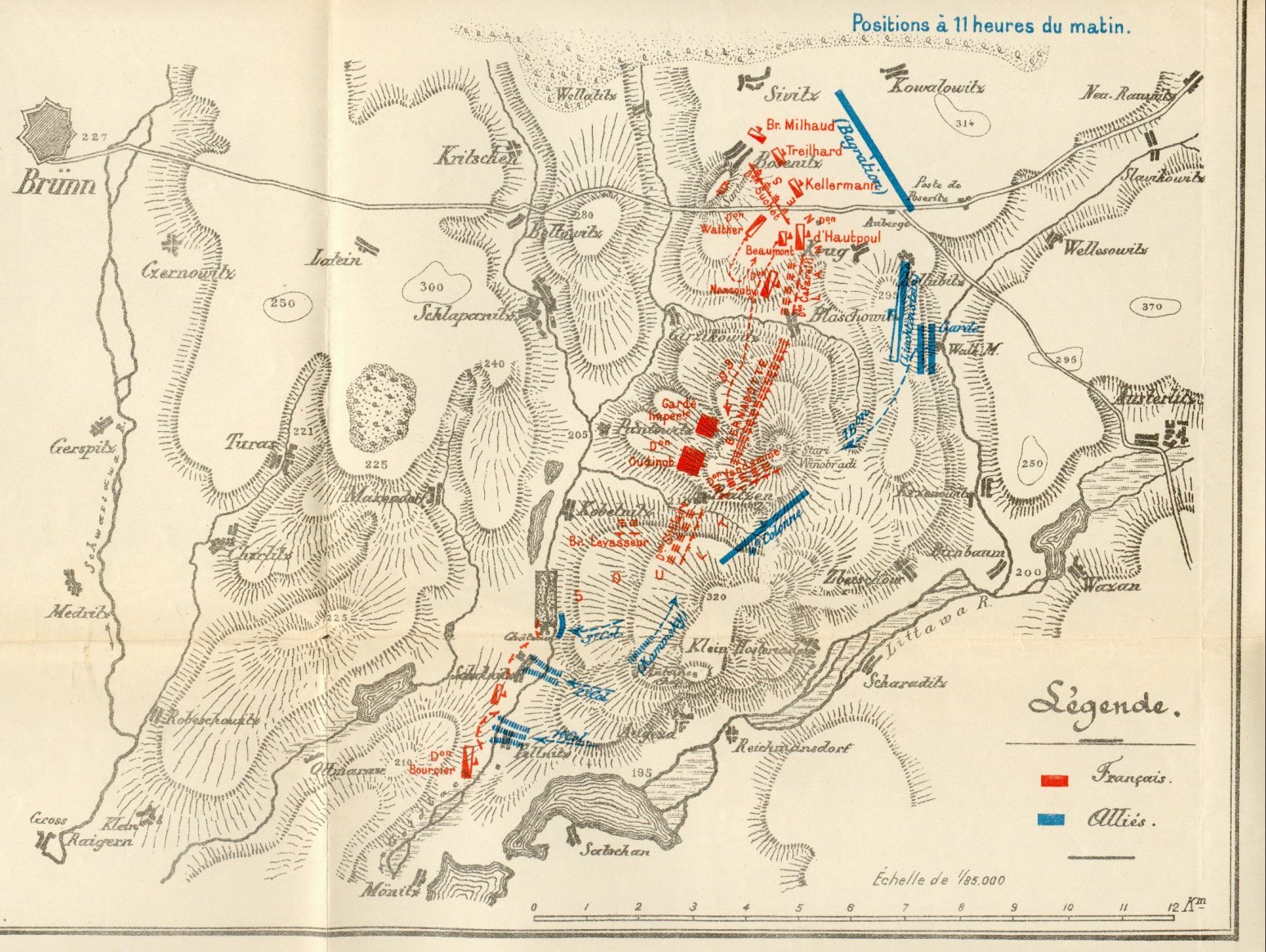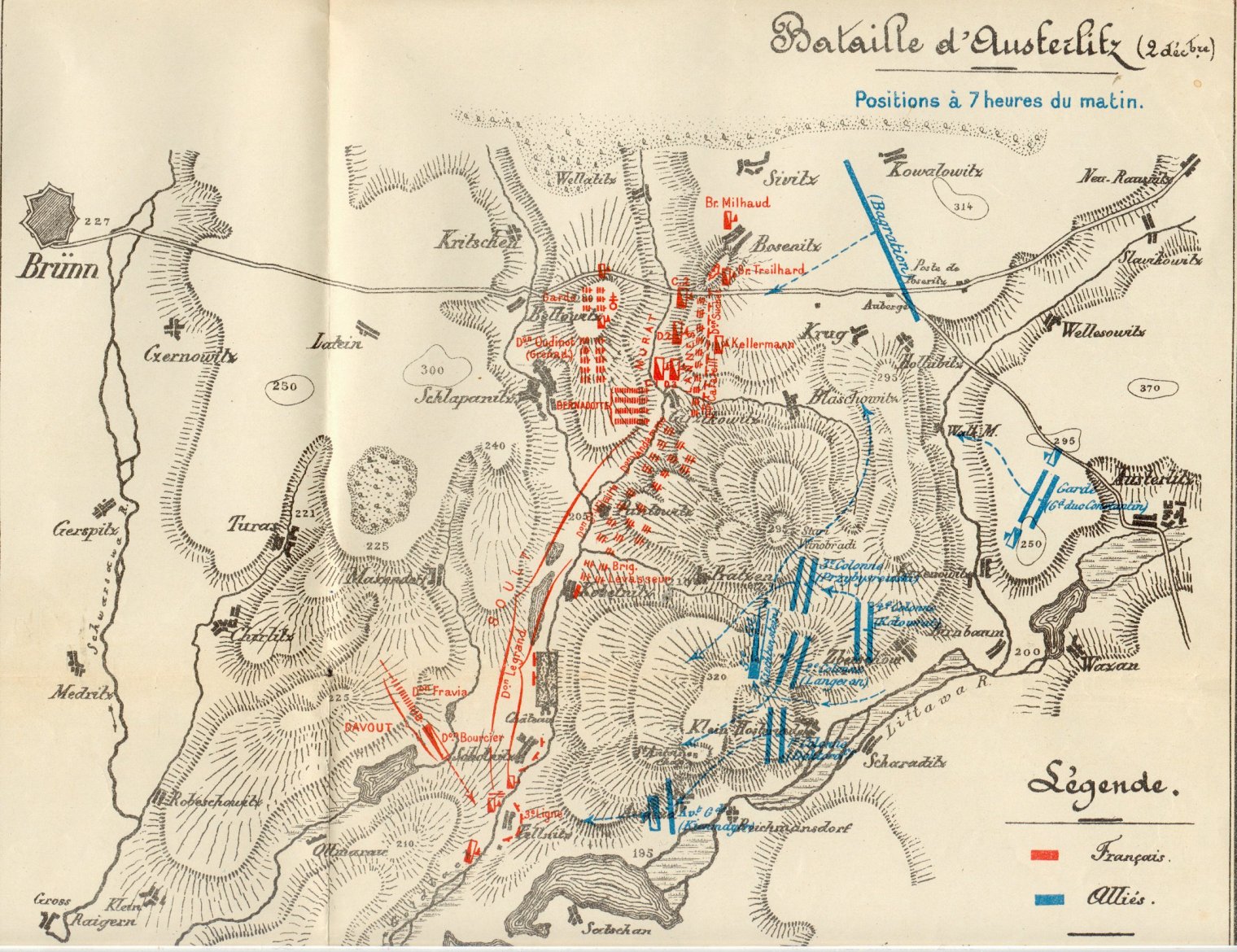Back to where
[you came from]
[explanation]

Austerlitz
"Non tutto e' oro quel che luccica"
by fravia+, Ideated: 2 December 2001
easy to find on the web |
"Napoleon managed to lure the combined Austrian and Russian armies into one of the most famous traps in military history"
Drouet, later Count d'Erlon, in his first battle as Division commander, deployed his 5,786 infantrymen in columns of half battalions each formed on a four company frontage, two divisions wide with a depth of two companies, (six files). Drouet put his Division in three lines of three battalions from the same regiments in checkerboard formation. Their appearance was a Godsend for the Guard cavalry who used the gaps in the formation to retreat out of a cavalry melee and rest and reform at the back of the Division.
The Battle of Austerlitz, 2 December 1805, was regarded by many (including the Emperor himself) as the most brilliant victory of Napoleon and the Grande Armée. By feigning weakness and withdrawing from the obvious defensive position of the Pratzen Heights, Napoleon fostered the overconfidence of the Allies and enticed them to launch a heavy attack on the French right. While 7,000 troops of the French right wing in Tellnitz and Sokolnitz fought 24,000 Allies to a standstill, the divisions of Saint-Hilaire and Vandamme were launched in a surprise attack onto the Pratzen Heights in the Allied center, pinning the Allied left against the Satschen Ponds. In the north, Lannes' French V Corps met Bagration's Russians head-on in a classic chessboard-like face-off. Desperate Allied counterattacks led to multiple episodes of heroism on both sides, but the Allied leaders had been thoroughly outwitted and out-generaled and went down to catastrophic defeat.
http://www.napoleonguide.com/wargames_batauster.htm
The battle - regarded as a sublime trap and victory for Napoleon Bonaparte - saw the forces of Austria and Russia take on an outnumbered French army. It should have been an easy win for them, but overconfidence in their superior numbers lulled the Allies into a false sense of security and opened the way for Bonaparte to destroy them. Firstly he hid his initial numbers - aided by thick fog - and appeared much weaker than he was. He also knew fast-matching reinforcements were on the way and would arrive in time to bolster the French lines.
Next, Bonaparte withdrew from the strategically important Pratzen Heights - falsely signalling to the Austrians and Russians that he was in no position to either defend them or launch and attack. Unwisely splitting their forces to crush the right flank of the French, the Allies weakened the centre and when it was dangerously thin Bonaparte struck.
http://www.gmtgames.com/nnau/aus_main.html
The Battle of Austerlitz was Napoleon's tactical masterpiece. Facing an Allied army 72,000 men strong, he blocked a massive Allied flanking movement aimed at his right wing, launched an attack that smashed the Allied center, and then scattered the remnants so thoroughly that by the night of December 2nd the Allied Third Coalition was in ruins. The battle contained many moments of high drama: the French right wing holding on despite 3-to-1 odds, desperately waiting for help from Davout's corps rushing to the battlefield after an epic forced march; a massive cavalry melee fought on the northern half of the field between the opposing cavalry reserves; the clash of the French and Russian Imperial Guards on the Pratzen Heights that decided the course of the battle.
easy to find on the web |
"Soldats, L'armée russe se présente devant vous pour venger l'armée autrichienne d'Ulm. Ce sont ces mêmes bataillons que vous avez battus à Hollabrunn, et que depuis vous avez constamment poursuivis jusqu'ici. Les positions que nous occupons sont formidables; et, pendant qu'ils marcheront pour tourner ma droite, ils me présenteront le flanc. Soldats, je dirigerai moi-même tous vos bataillons; je me tiendrai loin du feu, si, avec votre bravoure accoutumée, vous portez le désordre et la confusion dans les rangs ennemis; mais, si la victoire était un moment incertaine, vous verriez votre Empereur s'exposer aux premiers coups, car la victoire ne saurait hésiter, dans cette journée surtout où il y va de l'honneur de l'infanterie française, qui importe tant à l'honneur de toute la nation. Que, sous prétexte d'emmener les blessés, on ne dégarnisse pas les rangs, et que chacun soit bien pénétré de cette pensée, qu'il faut vaincre ces stipendiés de l'Angleterre qui sont animés d'une si grande haine contre notre nation.
Cette victoire finira notre campagne, et nous pourrons reprendre nos quartiers d'hiver, où nous serons joints par les nouvelles armées qui se forment en France; et alors la paix que je ferai sera digne de mon peuple, de vous et de moi"
Signé NAPOLEON
Moniteur du 25 frimaire, an XIV.
afaik impossible to find on the web... but here |
The northern extremity of the battle area is marked by the 700-foot mound of the Santon, overlooking the main highway from Bruenn to Olmuetz, which runs immediately to his south. This road runs over two streams, the Goldbach and its tributary the Bosenitzer, flowing south through steep and narrow gorges to join at the village of Puntowitz. This hamlet forms a triangle...THE COMPLETE DETAILED DESCRIPTION IS HERE...
afaik impossible to find on the web... but here |
You can often understand better a strategical/tactical event if you start from the final situation and go back to the beginning...
Note that a reading of the detailed developments will help you understand them.
( ~500000 bytes-map if you click it) |
No way you'll find these maps on the web

( ~500000 bytes-map if you click it) |
No way you'll find these maps on the web

( ~500000 bytes-map if you click it) |
No way you'll find these maps on the web
